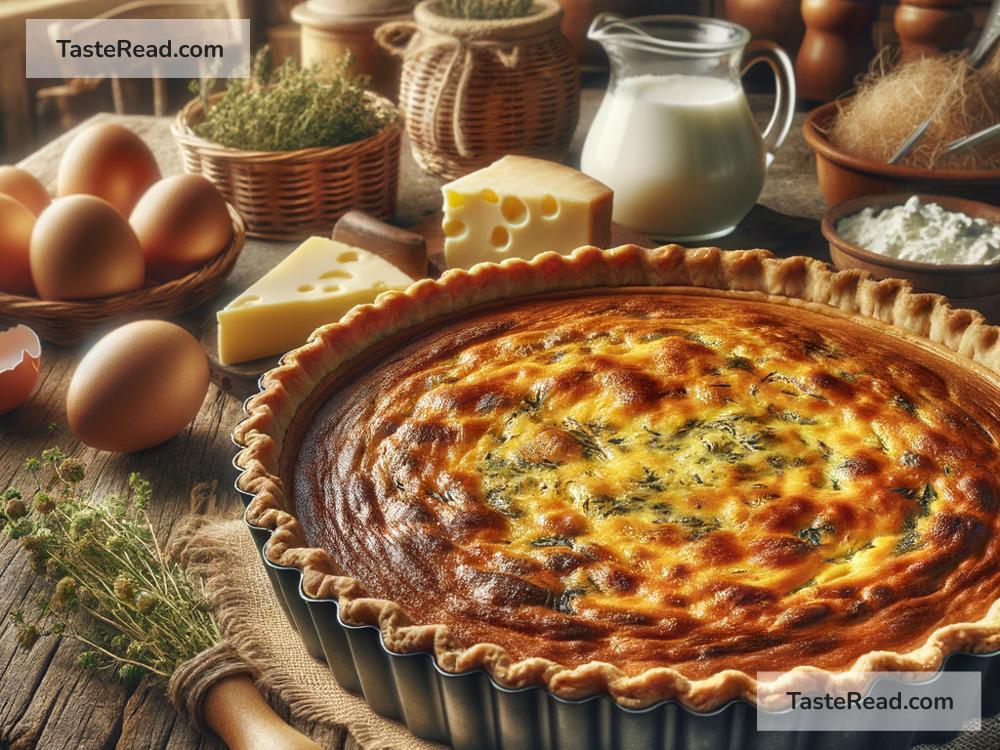The Development of the French Quiche
Quiche is one of the most famous dishes from France, loved by people all over the world. This savory pie is made with a crust filled with eggs, cream, cheese, and other ingredients like vegetables, meat, or seafood. While quiche might seem fancy, its history is rooted in simple cooking traditions and has changed a lot over time. Let’s explore the story of how quiche developed and became the iconic dish we know today.
Origins of Quiche
Despite being known as a French dish, quiche’s roots go back to Germany. The word “quiche” itself comes from the German word “kuchen,” meaning cake. The earliest version of quiche was created in the Lorraine region, which was once part of Germany but later became part of France. This first quiche was called “Quiche Lorraine,” and it consisted of a simple crust filled with eggs and cream. Over time, bacon was added, which gave the dish more flavor and made it more filling.
At its core, quiche was a way to use basic ingredients in a creative way. Farmers in the Lorraine region relied on their local produce, like eggs, dairy, and pork, to make meals. The crust was typically made from bread dough, which was rolled out to create a base for the filling. This humble pie would eventually evolve into the elegant dish we now associate with French cuisine.
The French Influence
When Lorraine became part of France, French chefs began to refine the dish. They replaced the bread crust with a pastry crust, making quiche lighter and more delicate. French chefs also introduced new ingredients, experimenting with cheeses, vegetables, and meats. These changes transformed quiche into a more versatile dish that could be served for breakfast, lunch, or dinner.
One reason quiche became so popular was because of its simplicity. It required only a few basic ingredients, was easy to prepare, and cost little to make. This made quiche accessible to both wealthy families and everyday home cooks. Over time, quiche started appearing on menus at cafés and restaurants, earning a reputation as a classic French dish.
Variations of Quiche
As quiche grew in popularity, different regions and chefs created their own versions of the dish. Quiche Lorraine remained the traditional version, made with eggs, cream, and bacon, but people began adding new ingredients to suit their tastes. For example:
- Quiche Florentine includes spinach, combining a healthy green vegetable with the creamy filling.
- Quiche aux Champignons features mushrooms, giving the dish an earthy flavor.
- Quiche aux Fruits de Mer uses seafood, like shrimp or crab, for a taste of the ocean.
- Vegetarian Quiche replaces meat with vegetables like zucchini, broccoli, or peppers.
These variations showed how flexible quiche could be. Home cooks and chefs alike enjoyed experimenting with different combinations, which allowed quiche to appeal to many different diets and preferences.
Quiche Around the World
Eventually, quiche spread beyond France and gained international fame. In the 20th century, as French cooking became more popular worldwide, chefs brought the dish to new countries. In the United States and the United Kingdom, quiche became especially popular in the 1950s and 1960s. It was seen as sophisticated and perfect for parties, brunches, and picnics.
In these countries, people began creating their own versions of quiche to fit local tastes. For example, American cooks often used cheddar cheese instead of traditional French cheeses like Gruyère. They also added ingredients like ham, tomatoes, or even spicy peppers for extra flavor. The basic recipe remained the same, but the fillings became more creative, reflecting the diverse culinary traditions of different regions.
Modern-Day Quiche
Today, quiche is enjoyed around the world and continues to evolve. Although traditional Quiche Lorraine remains popular, cooks love to try new combinations of flavors. Gluten-free crusts, vegan quiches made with plant-based milk and tofu, and fusion flavors (like adding curry spices or Asian vegetables) demonstrate how modern cooking trends influence this classic dish.
In France, quiche is still a beloved staple, often found at bakeries, cafés, and home kitchens. It represents comfort, tradition, and adaptability. Whether served hot or cold, as part of a meal or on its own, quiche remains a versatile dish that can be enjoyed in countless ways.
Why Quiche Is Special
Quiche is more than just a pie. It’s a dish that connects people to history, culture, and creativity. Its journey from a simple creation in the Lorraine region to a global comfort food shows how food can change and grow while keeping its original charm. Quiche’s ability to adapt to different ingredients and tastes ensures that it will remain a favorite for generations to come.
So, the next time you enjoy a slice of quiche, remember the long journey it’s taken—from Germany to France to your plate! This delicious dish reminds us that even simple food can have a rich and fascinating history. Why not try making one at home and add your own twist? With quiche, the possibilities are endless.


